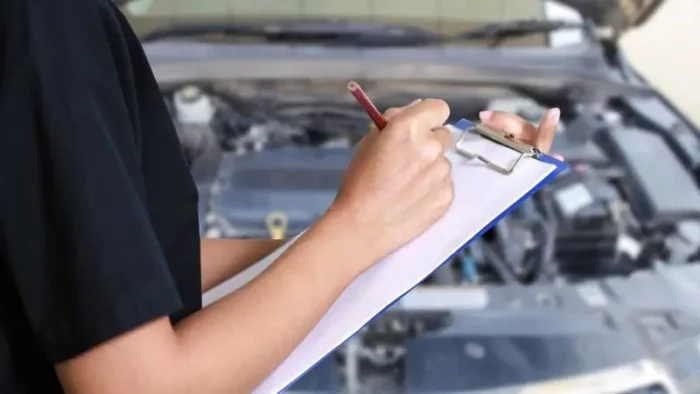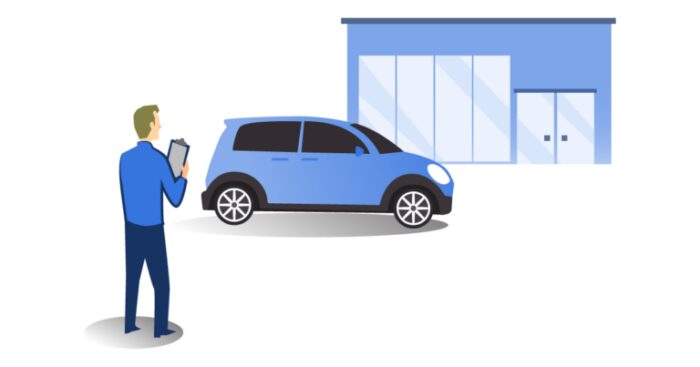
When it comes to buying or selling a vehicle, the appraisal process plays a crucial role in determining its value. However, traditional evaluation methods often involve complex procedures, lengthy wait times, and a lack of transparency. These issues can result in frustration and inconvenience for both customers and appraisers. To overcome these challenges and provide a hassle-free experience, it is essential to streamline the vehicle appraisal process.
Defining the Process: A Step-by-Step Overview
To streamline any process, it is crucial to have a clear understanding of its components. The vehicle appraisal process typically involves several steps, starting with the review of documentation. This includes gathering information such as vehicle registration, maintenance records, and ownership history.
The next step is the vehicle inspection, where appraisers assess the condition of the vehicle’s exterior, interior, mechanical components, and overall functionality. Following the inspection, the appraiser evaluates the vehicle’s current market value based on factors like make, model, mileage, condition, and demand. Finally, the appraiser communicates the appraisal results to the customer and provides a detailed report explaining the valuation process.

Utilizing Technology: Leveraging Digital Tools for Efficient Appraisal
In today’s digital age, technology offers numerous opportunities to streamline the appraisal process. By leveraging digital tools, appraisers can gather vehicle information more efficiently and accurately. Mobile apps or online platforms can be used to collect relevant data, such as VIN numbers, vehicle specifications, and accident history. This eliminates the need for manual paperwork and reduces the chances of errors or misinterpretation.
Digital platforms can facilitate seamless communication between appraisers and customers, allowing for instant updates, appointment scheduling, and document sharing. Utilizing technology not only enhances efficiency but also improves the overall customer experience.
Preparing Documentation: Gathering and Organizing Required Vehicle Information
Documentation is a vital part of the vehicle appraisal process, as it provides essential information about the vehicle’s history and condition. To streamline this aspect, appraisers should develop standardized checklists or digital forms to collect necessary information systematically. These checklists can include details such as vehicle specifications, maintenance records, previous accident history, and any modifications or upgrades.
By following a structured approach, appraisers can ensure that all required documentation is gathered consistently and efficiently. Additionally, integrating document management systems can help organize and store relevant paperwork securely, ensuring quick and easy access whenever required.

Assessing Vehicle Condition: Simplifying the Inspection and Evaluation Process
Vehicle inspections are a critical component of the process, as they provide insight into the overall condition and functionality of the vehicle. Streamlining this process involves implementing standardized inspection checklists that cover all essential aspects, including the exterior, interior, engine, transmission, suspension, brakes, tires, and electronics. By following a comprehensive checklist, appraisers can ensure that every component is thoroughly evaluated, eliminating the possibility of oversight.
Moreover, the use of digital tools, such as mobile apps or tablets, can simplify the inspection process by allowing appraisers to capture images or videos for documentation. This not only saves time but also provides visual evidence for customers and enhances transparency.
Pricing and Valuation: Implementing Reliable Methods for Fair and Accurate Appraisal
Determining the appropriate price for a vehicle is a crucial part of the evaluation process. To streamline this aspect, appraisers should implement reliable and transparent methods for pricing and valuation. Data-driven valuation tools, such as industry databases or market analysis software, can provide appraisers with accurate market values based on factors like make, model, mileage, condition, and demand.
Appraisers should also conduct thorough market research to identify recent sales trends and price fluctuations. This ensures that the appraisal reflects the current market conditions and provides a fair and accurate valuation for the customer. Furthermore, appraisers should be able to explain their valuation methods to customers in a clear and concise manner, fostering transparency and trust.

Enhancing Communication: Streamlining Information Exchange Between Appraisers and Customers
Smooth and effective communication between appraisers and customers is essential for a hassle-free appraisal experience. Implementing various communication channels can streamline information exchange and ensure timely updates. For instance, instant messaging platforms, email, or phone calls can be used to address customer queries, provide progress updates, and discuss any additional documentation or information required.
Additionally, digital platforms can be utilized to allow customers to track their appraisal status in real time. By enhancing communication and keeping customers informed throughout the process, appraisers can create a transparent and efficient appraisal experience.
Reducing Wait Times: Optimizing Appointment Scheduling and Service Efficiency
Long wait times can often frustrate customers and hinder the appraisal process. To streamline this aspect, appraisers should implement efficient appointment scheduling systems that prioritize customer convenience. Online booking platforms or mobile apps can allow customers to select their preferred appointment slots, reducing the need for time-consuming phone calls or manual scheduling. Implementing appointment reminders can help minimize no-shows and ensure that appraisers can effectively manage their time.

Enhancing Customer Experience: Providing Clear and Transparent Appraisal Services
A streamlined vehicle appraisal process should prioritize the customer experience. Ensuring transparency throughout the process is crucial to building trust and confidence. Appraisers should clearly explain the appraisal procedures, outline the criteria used for evaluation, and provide customers with detailed appraisal reports. These reports should include information about the inspection findings, valuation methods, and any relevant market data that influenced the appraisal.
By providing customers with clear and transparent information, appraisers empower them to make informed decisions. Additionally, involving customers in the appraisal process by addressing their questions, concerns, and preferences fosters a sense of collaboration and customer-centricity. This personalized approach enhances the overall customer experience and sets the foundation for a hassle-free appraisal journey.
Continuous Improvement: Monitoring Performance and Implementing Feedback Loops
To maintain a streamlined appraisal process, continuous improvement is essential. Monitoring key performance indicators (KPIs) allows appraisers to identify areas that require attention and implement necessary changes. KPIs can include turnaround time, customer satisfaction ratings, accuracy levels, and productivity metrics. Regular performance reviews and appraiser training sessions can help address any skill gaps or process inefficiencies.
Additionally, appraisers should actively seek feedback from customers and incorporate their suggestions for improvement. By embracing a culture of continuous learning and improvement, appraisers can refine their processes, enhance efficiency, and provide an exceptional experience to customers.

Conclusion
Streamlining the process of vehicle appraisal can help make the experience hassle-free for both buyers and sellers. By using technology to help automate some of the tasks, you can save time and money while reducing your chances of making mistakes along the way. With a simplified appraisal system in place, everyone involved will benefit from greater efficiency and accuracy throughout every step of the process.











